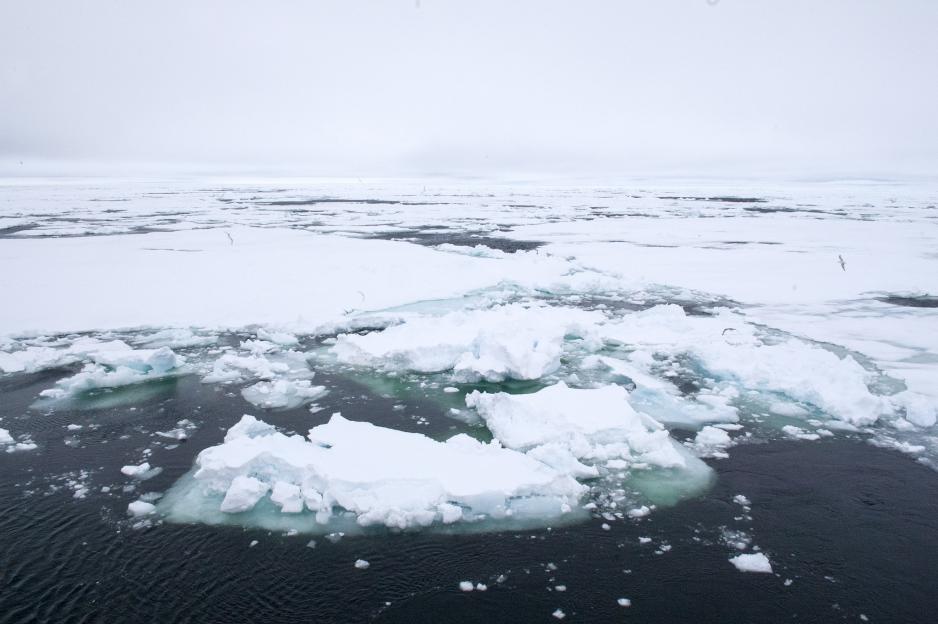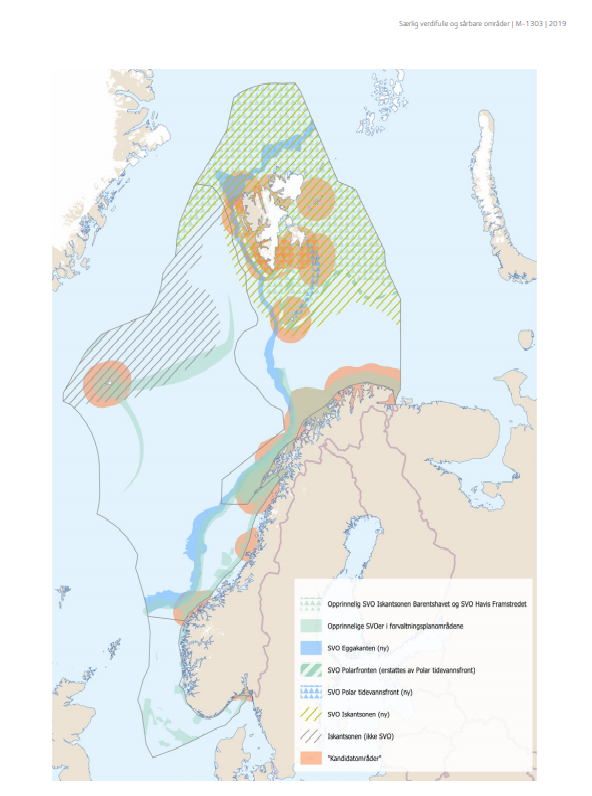The Struggle Over the Ice Edge Decides the Future of Norway’s Oil

The polar ice edge. Photo: Karine Nigar Aarskog / UiT
Where does one draw the boundaries for the Arctic? Who gets to define it? That is one of the major and challenging issues that Norwegian politicians need to answer before voting over a new Barents Sea management plan in April.
The ice edge is the definition of an area where open seas meet ice of any kind – or the border of the Arctic, if you will.
This area is biologically important as there is extensive production of plant plankton in this zone, plankton that is feed to animal plankton, fish, sea mammals and sea birds.
This is the main reason why the Norwegian government parties in their founding document, the Granavolden platform, committed to not permitting petroleum activities at the ice edge.
“The effects from shipping and petroleum activities are presumedly limited for now, however, given that an acute oil spill were to reach the ice edge, it could have major local consequences, depending on extent, kind of emission and season”, the Norwegian Polar Institute writes in its report ‘Miljøverdier og sårbarhet i iskantsonen (2018)’ [Environmental values and vulnerability in the polar ice edge zone (2018)].
Professionals disagree
So far, neither experts nor politicians have managed to agree on where to draw the line for the ice edge. Whereas the Liberal Party wants to move the ice edge south, and through that protect larger areas, the Progress Party wants a dynamic ice edge.
Now that the Progress Party has left the government, and with that is no longer bound by the Granavolden platform, there is much that goes to indicate that there will be tough negotiations before Stortinget, the Norwegian parliament, is to make its decision towards the end of April.
“The ice edge will not be moved one single meter, at least not to the south”, said Deputy Chair of the Progress Party, Sylvi Listhaug, to Norwegian broadcaster NRK the other day.
The government has asked a wide panel of experts to assess where one should draw the line of the ice edge and to work out the scientific foundation on which the MP’s should base their decision. The Professional Forum for Norwegian Sea Areas and the Advisory Group for Monitoring (the Monitoring Group) consist of representatives from the Norwegian Institute of Marine Research, the Norwegian Polar Institute, the Norwegian Petroleum Directorate as well as the Petroleum Safety Authority Norway.
The government has said that it will listen to the professional advice of the Professional Forum, however, the forum members disagree amongst themselves about how much sea ice there must be in the sea in order for it to be defined as the ice edge.
A major gap
The Norwegian Polar Institute argues that the ice edge zone should be defined as the area in which the likelihood of sea ice occurring is 0.5 percent, whereas the oil industry wants it at 30 percent.
If measured by area, the difference of these recommendations is gigantic. The wider definition of the ice edge zone, i.e. with a border drawn based on 0.5 percent ice frequency, will be more than 150,000 square kilometers larger than the smaller definition of the ice edge measured by 30 percent ice frequency.
The difference between he two alternatives covers an area almost half the size of mainland Norway, WWF Norway demonstrates in its report ‘På kant med kunnskapen’ [Edging Knowledge] from 2019.
The difference between he two alternatives covers an area almost half the size of mainland Norway
Oil or not oil – that is the question
As much as 25 percent of the world’s undiscovered oil and gas resources may be located in Arctic areas, and the Norwegian parliamentary decision in April will in reality decide how far north one will permit petroleum exploration.
However, first, MP’s must decide what definition of the ice edge to apply. The issue carries great significance for the kind of activities that will be permitted in the area in question.
Today, the government applies a 30 percent ice frequency. The political leadership of the Ministry of Oil and Energy argue that this is how it should continue.
However, the Liberal Party in Northern Norway has signaled that this issue is so important that they will want to leave the government should the Parliament chose not to listen to the Polar Institute.
The Progress Party argues that it is possible to open up for petroleum activities while also protecting the environment.
The Labour Party, the Center Party and the Conservatives will wait and see. Labour leader Jonas Gahr Støre said in a recent radio interview that Labour will not do anything that will lead to some having to take on “a bigger burden” in order to save the climate than others do.
Three recommendations
WWF published a report just before Christmas in which the organization argues the case for why we need a clear ice edge zone.
“The ice edge is not an actual edge. It is a sea area in which there is ice through all or parts of the year. How much ice there is will vary, depending on season, climate and ocean currents. In any case, it is a gradual transition from areas with open sea to areas with stable ice cover. The best expression to describe this area is not the ice edge, but rather the ice edge zone”, it writes.
Karoline Andaur, acting Secretary-General of WWF Norway, then presents three arguments for why the MP’s should listen to the Polar Institute’s definition of the ice edge:
“First of all, such a definition of the ice edge would give these irreplaceable natural values the best protection available, with the least possible risk for damages that affect productivity of its ecosystems. Secondly, the politicians would be sending out a clear signal about the value of listening to professional environmental knowledge in a time where we see that the respect for such knowledge is under pressure in many parts of the world. Thirdly, such a decision would contribute to strengthening Norway’s position in important international negotiation processes, whether they be about sustainable ocean management, natural diversity or the climate.”
This article was originally published in Norwegian and has been translated by HNN's Elisabeth Bergquist.


